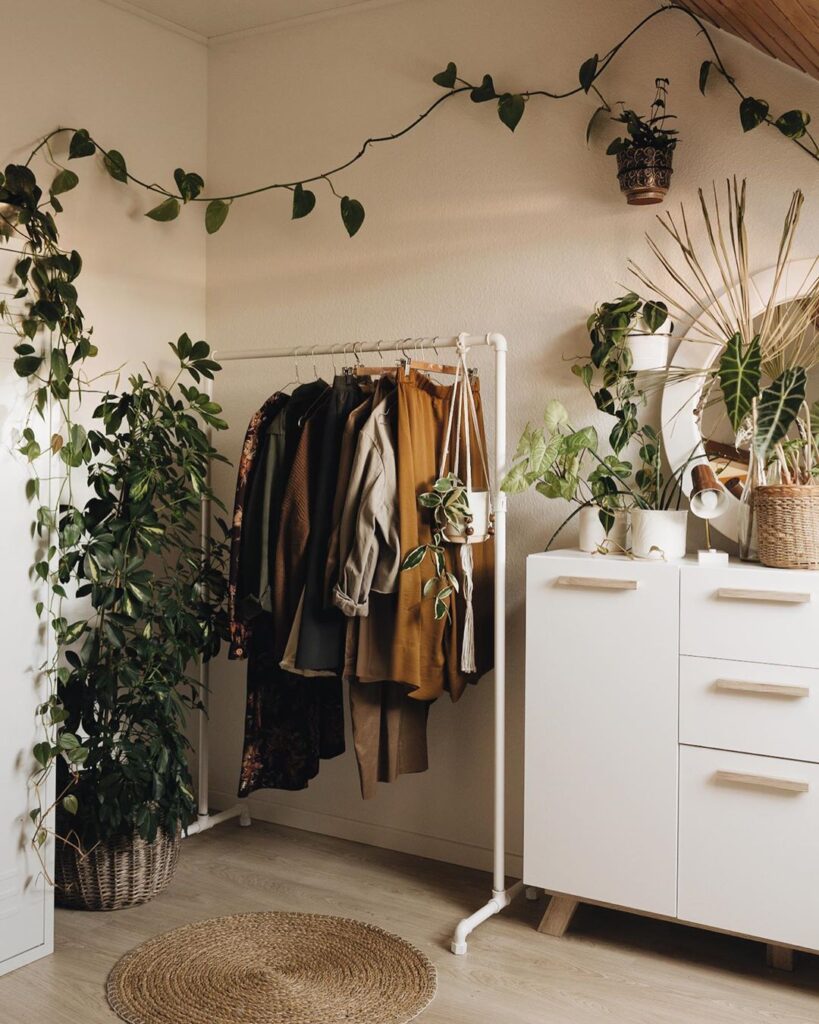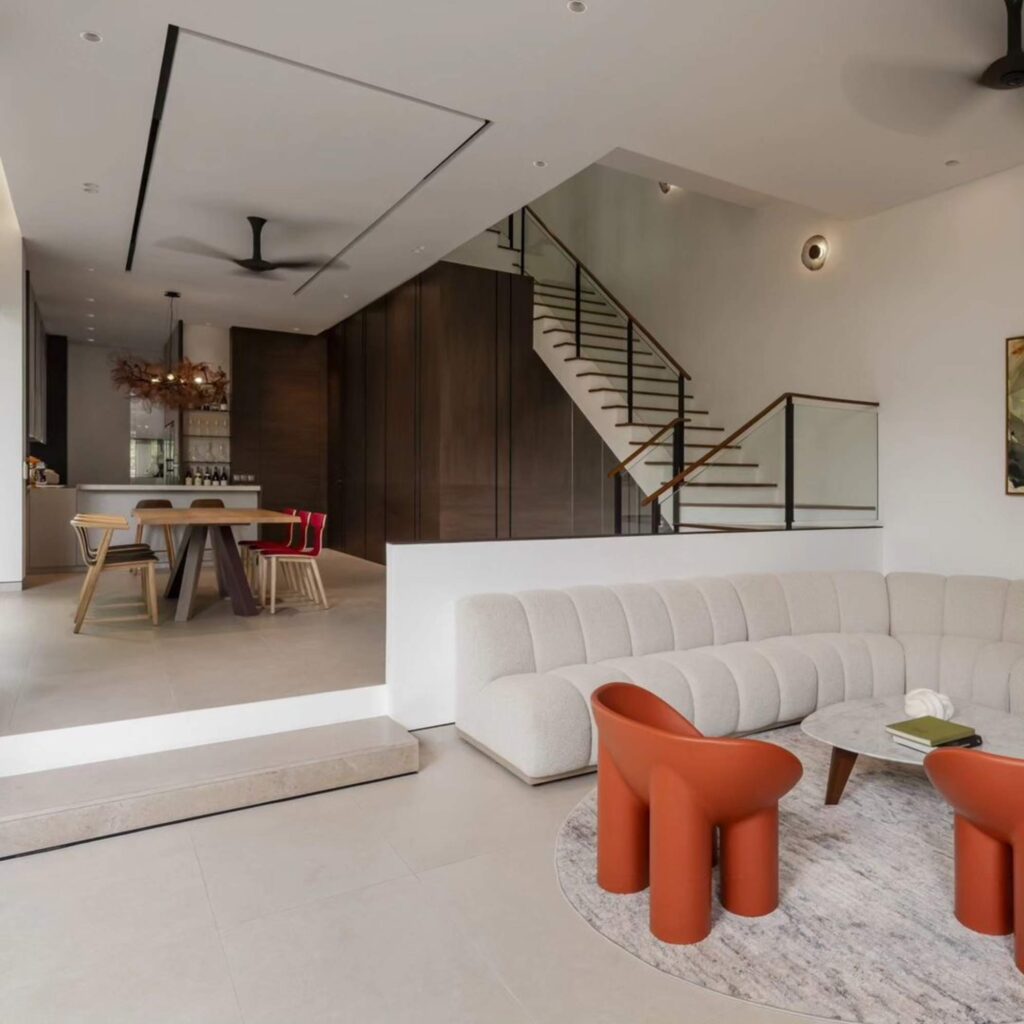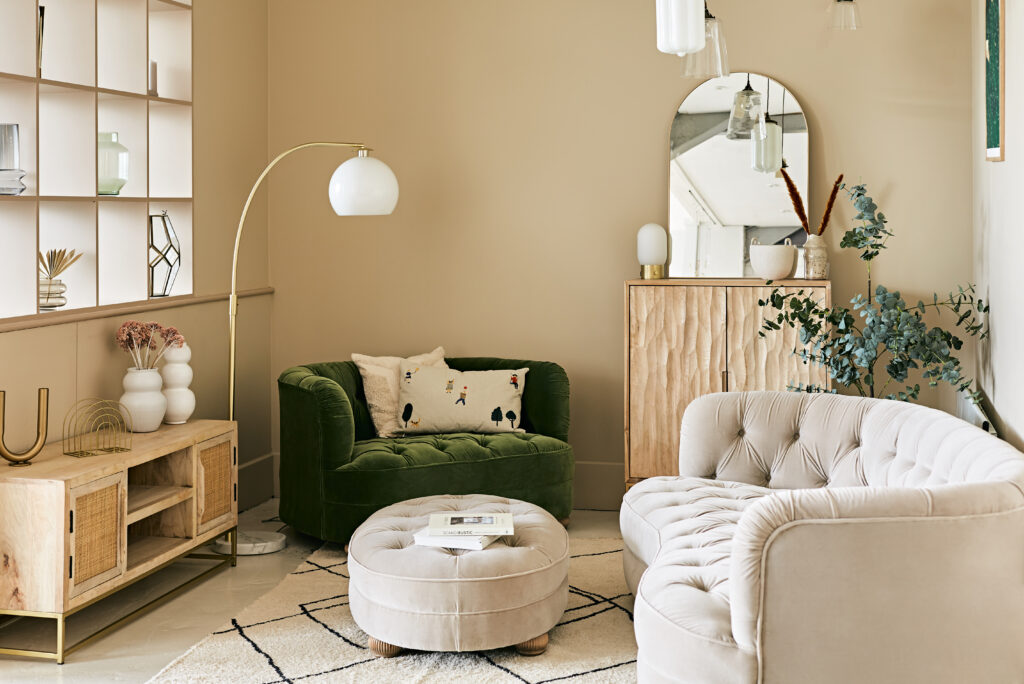Transforming Compact Living Spaces
Living in a compact home can be both a challenge and an opportunity. While smaller spaces often come with constraints, they also present unique chances to express creativity and functionality. Many individuals have found ways to turn these limitations into a canvas for innovation. With the right organization strategies, even the tiniest spaces can be transformed into functional and stylish habitats for everyday life.
Maximize Vertical Space
One of the most effective strategies for enhancing the utility of a small space is to maximize vertical space. This approach involves creatively using walls by installing shelves, hooks, and other wall-mounted storage solutions that direct the viewer’s attention upward. Consider tall bookshelves that extend to the ceiling or using hanging planters to save floor space while adding a touch of greenery. Wall-mounted pegboards are another innovative solution, providing customizable storage options for everything from kitchen utensils to office supplies, ensuring that every inch of wall space is effectively utilized.
Embrace Multi-Functional Furniture
Investing in multi-functional furniture is crucial for small space living, as it allows homeowners to maximize utility without cluttering the environment. A bed frame with built-in storage drawers can serve as both a sleeping area and a place to stow away seasonal clothing or extra linens. Sofa beds are another brilliant addition, offering seating during the day and transforming into a comfortable sleeping area at night. Tables that can expand or contract based on need and ottomans that open for hidden storage exemplify the potential of versatile furnishings. These choices reduce the need for additional items, making space feel less cramped and more inviting.
Regular Decluttering Practices
To maintain order, it is essential to declutter regularly. Keeping only what you need and love not only frees up space but also creates an atmosphere of peace. Creating a habit of evaluating possessions—perhaps seasonally—can help identify items that may no longer serve a purpose. Utilizing storage bins and baskets can streamline the process, allowing residents to organize belongings efficiently, whether it’s toys in the living room or kitchen gadgets. Additionally, adopting the one-in-one-out rule—whereby you let go of one item for every new one brought into the home—can keep clutter in check.
Understanding the Importance of Space
Interestingly, many people remain unaware that small homes can still reflect personal style and cater to comfort. Reports indicate that over 35% of U.S. households live in spaces under 1,000 square feet, showcasing a growing trend towards minimalism and efficient living. Moreover, experts claim that effective organization can increase the perceived space by as much as 20%. Furthermore, studies have revealed a strong correlation between uncluttered spaces and improved mental well-being, encouraging residents to create environments that foster calm and clarity.
Are you ready to revolutionize your small living environment? By implementing expert organization tips, you can create an enjoyable and efficient home. From maximizing vertical real estate to embracing multi-functional furniture, the possibilities are endless. Stay tuned as we explore engaging and practical solutions tailored specifically for compact homes, helping you discover how to navigate small space living like a pro.
CHECK OUT: Click here to explore more
Innovative Strategies for Clever Organization
Navigating life in a compact home often requires a creative mindset and a willingness to embrace innovative organization techniques. The beauty of small space living lies in its potential for efficiency and style, enabling homeowners and renters alike to curate their environment in a way that maximizes both functionality and aesthetics. Below are some practical tips and strategies specifically designed to address the unique challenges of living in a limited area.
Utilize Under-Bed Storage
When it comes to small spaces, under-bed storage is a game-changer. The area beneath the bed is often an overlooked zone full of potential. Invest in storage bins or drawers designed to fit seamlessly under your bed. These can be perfect for stowing seasonal clothing, extra linens, or even rarely used shoes. A clever alternative is a lofted bed, which raises the sleeping area and allows for a desk or seating area beneath, transforming an otherwise wasted space into a productive nook.
Create Zones for Different Activities
Designating specific areas for different activities can help maintain a sense of order and purpose in a tight spot. Zone creation fosters organization and functionality within your home. For example:
- Work Zone: Set up a dedicated workspace with essential supplies that are easily accessible.
- Relaxation Zone: Create a small reading nook with a comfy chair and good lighting to provide a space for unwinding.
- Dining Zone: Use a foldable table or a small bistro set that can be stowed away when not in use, perfect for intimate meals without taking up too much space.
Each zone should have clear boundaries, perhaps defined by rugs or furniture arrangement, ensuring that the compact home maintains an organized flow and avoids the overwhelming feeling of clutter.
Vertical Storage Solutions Beyond Shelving
While floating shelves are a well-known solution for small spaces, there are many other vertical storage solutions that can effectively maximize storage potential. Consider extending your vertical storage with:
- Over-the-door organizers: Perfect for shoes, cleaning supplies, or pantry items, these utilize often-wasted areas to create additional storage.
- Wall-mounted baskets: These can hold everything from magazines to craft supplies, providing easy access to frequently used items.
- Hooks and racks: Use decorative hooks to hang bags, hats, or bikes, keeping them off the floor and reducing chaos.
By thinking vertically, you not only gain storage but also enhance the visual appeal of your living space, allowing for personal touches that reflect your style.
As you embark on your journey toward a more organized compact home, implementing these strategies will bring new life to your living area. The key to success in small space living lies in your ability to think outside the box while staying true to your personal aesthetic. Through careful planning and organization, you can successfully create a harmonious and inviting environment, proving that even the tiniest homes can be both functional and beautifully designed.
Small Space Living Expert Organization Tips for Compact Homes
Living in compact homes can be both rewarding and challenging. Mastering space maximization not only enhances your living experience but also promotes a sense of peace and order. Here are expert tips to help you organize your small space efficiently.
| Organization Tip | Benefits |
|---|---|
| Multi-Functional Furniture | Saves space and provides versatile solutions to accommodate your needs. |
| Vertical Storage Solutions | Utilizes vertical wall space to increase storage capacity without cluttering floor space. |
| Decluttering Regularly | Creates an organized environment, reducing stress and enhancing focus. |
| Creative Use of Baskets and Containers | Facilitates easy access while maintaining visual coherence and organization. |
Incorporating these expert organization tips into your small space living can transform your home into an oasis of efficiency and style. Explore the world of compact living and uncover how innovative solutions can lead to a more enjoyable and functional environment.
CHECK OUT: Click here to explore more
Maximizing Multifunctional Furniture
In the realm of small space living, multifunctional furniture becomes a fundamental ally. When square footage is at a premium, choosing pieces that serve multiple purposes can dramatically enhance functionality. Consider investing in:
- Sofa beds: Perfect for accommodating overnight guests without the permanent footprint of a dedicated guest room.
- Ottoman storage: An ottoman that doubles as a storage container can add a soft touch to a living area while providing a concealed space for blankets, games, or books.
- Drop-leaf tables: These can expand for meals and be tucked away when not in use, facilitating a seamless transition from dining area to free space.
This type of furniture not only conserves space but also introduces a dynamic aspect to your home’s layout, transitioning between different uses with ease.
Smart Organization Tools for Compact Spaces
When dealing with small spaces, it is essential to harness the power of smart organization tools to streamline your belongings. Various products on the market cater specifically to compact living, including:
- Drawer dividers: These keep utensils, office supplies, and other small items neatly arranged, ensuring that you can find what you need without digging through clutter.
- Rolling carts: These versatile storage solutions can be moved around as needed, serving as a mobile kitchen cart, workstation, or craft supply holder.
- Stackable bins: Whether for pantry items or toys, these allow you to stack storage vertically, making use of upward space and keeping items easily accessible.
Utilizing the right tools not only enhances organization but also encourages a maintainable system, allowing residents to adapt to their storage needs with the changing seasons or lifestyle.
Decluttering Regularly
Another critical aspect of living comfortably in a compact home is the practice of regular decluttering. Without periodic assessments of your belongings, it’s easy to accumulate items that no longer serve a purpose. Strategies for effective decluttering include:
- The “One In, One Out” Rule: For every new item brought into the home, one should be removed. This practice curbs excessive accumulation while ensuring new things have a dedicated spot.
- Seasonal Purge: Dedicate time each season to evaluate what you truly need, donate unwanted items, and make a refreshed inventory of your belongings.
- Sentimental Items Box: Limit the number of sentimental items to a designated box, forcing careful decision-making about what truly holds emotional value.
Decluttering not only frees up precious space but also fosters a mentally tidy environment, which is especially crucial in compact living situations.
Incorporate Multi-Purpose Decor
Another smart strategy involves the use of multi-purpose decor. Accessories that serve dual or triple functions can embellish your space while contributing to its functionality. Examples of this include:
- Decorative trays: Used for organizing miscellaneous items on a coffee table or countertop, they also serve as stunning display pieces.
- Dual-purpose lighting: Floor lamps with integrated shelves can light up a corner while offering space for books or plants.
- Mirror accents: Apart from their aesthetic appeal, mirrors can reflect light and create an illusion of a larger space, making even the coziest nooks feel more expansive.
By thoughtfully choosing decor that enhances both style and utility, you can maximize the impact of your limited space, creating a home that is both beautiful and practical.
CHECK OUT: Click here to explore more
Conclusion: Embracing the Art of Compact Living
In essence, mastering the art of small space living revolves around smart organization and intentionality. By incorporating multifunctional furniture, such as sofa beds and drop-leaf tables, you can seamlessly transform your living area to accommodate various needs without sacrificing style. Smart organization tools like drawer dividers and rolling carts are essential to streamline your belongings, enabling easy access while maximizing precious square footage.
Moreover, regular decluttering is key to maintaining a harmonious space. The practices of evaluating your possessions and committing to a “One In, One Out” strategy empower a mindset of less is more, helping create a more functional environment. As clutter dissipates, you’ll find that your compact home can feel both spacious and inviting.
Lastly, by integrating multi-purpose decor, you can enhance the aesthetic appeal of your home while ensuring it remains practical. Accessories that are both decorative and functional—like mirror accents and dual-purpose lighting—offer a creative way to elevate your compact living space. In a world where homes are increasingly shrinking, embracing these expert organization tips will not only optimize your living area but also enrich your daily experience, allowing you to fully enjoy the charm of compact living.
As you embark on your journey toward a more organized and inviting small space, keep exploring innovative solutions that can make your home a true reflection of your lifestyle. The possibilities are boundless, and with a little creativity, your compact residence can become a stylish haven tailored to your unique needs.

Linda Carter is a writer and organization expert specializing in minimalism and personal organization. With extensive experience helping individuals create clutter-free, functional spaces and adopt mindful habits, Linda shares her knowledge on our platform. Her goal is to empower readers with practical advice and strategies to simplify their lives, stay organized, and achieve a sense of calm and balance in their daily routines.








